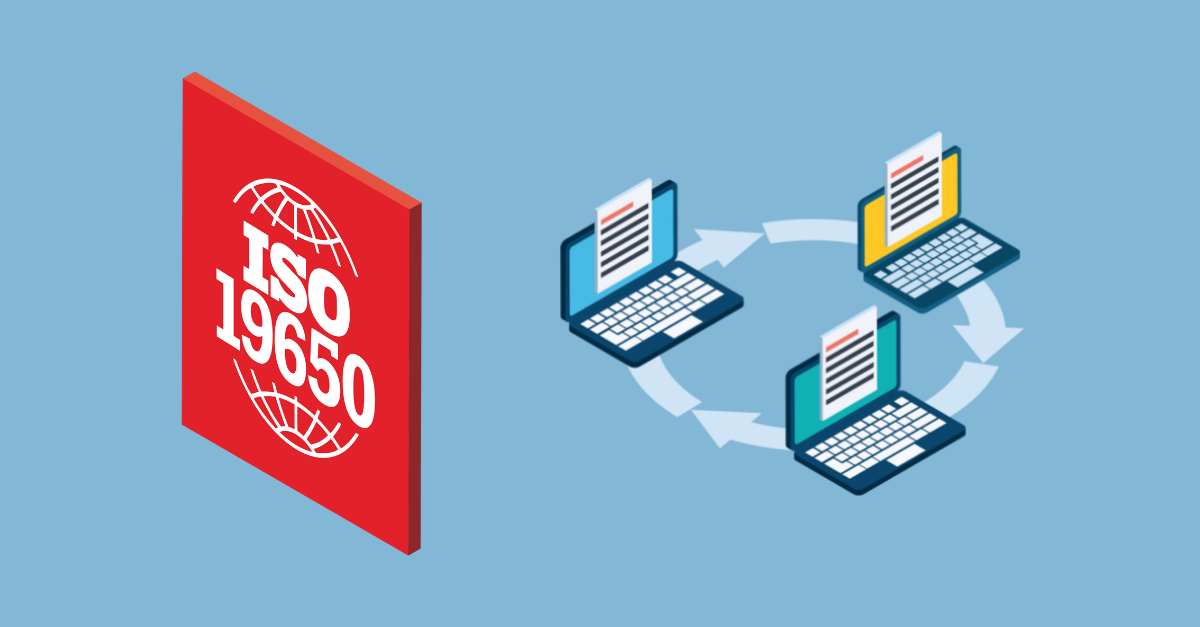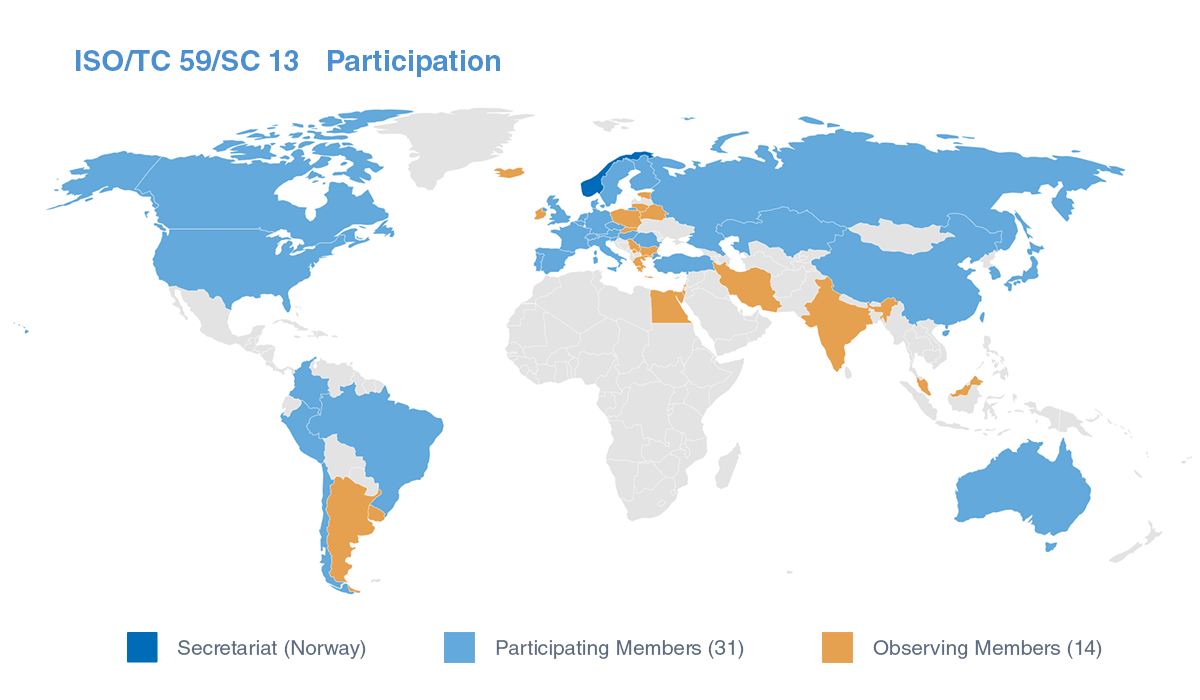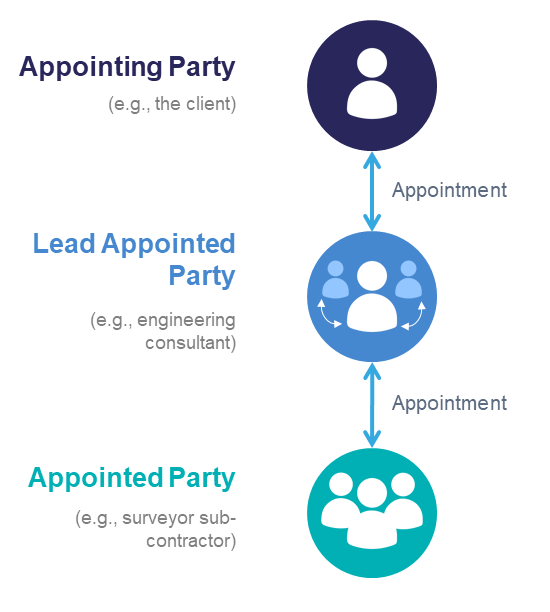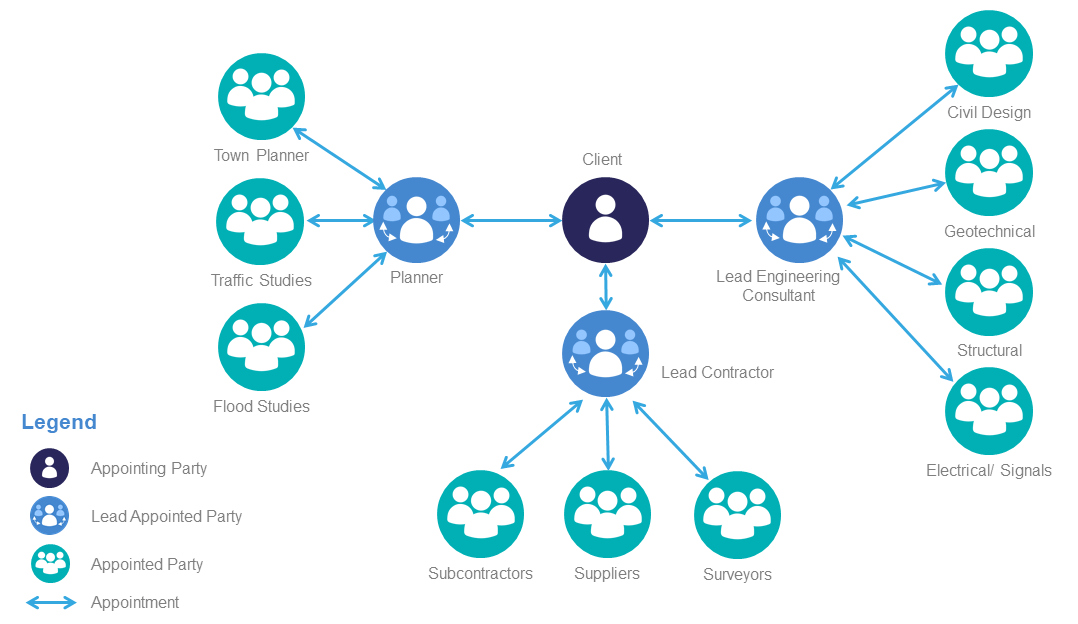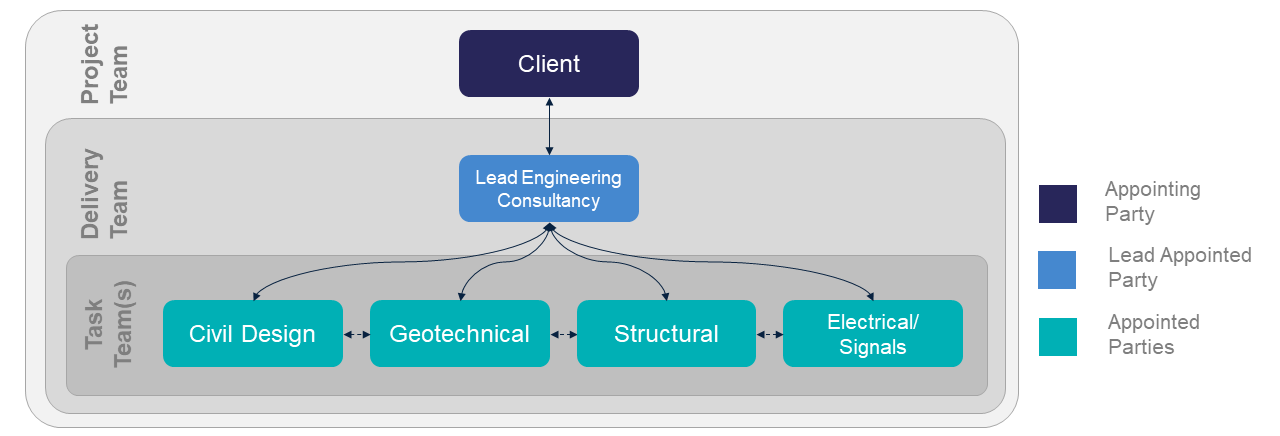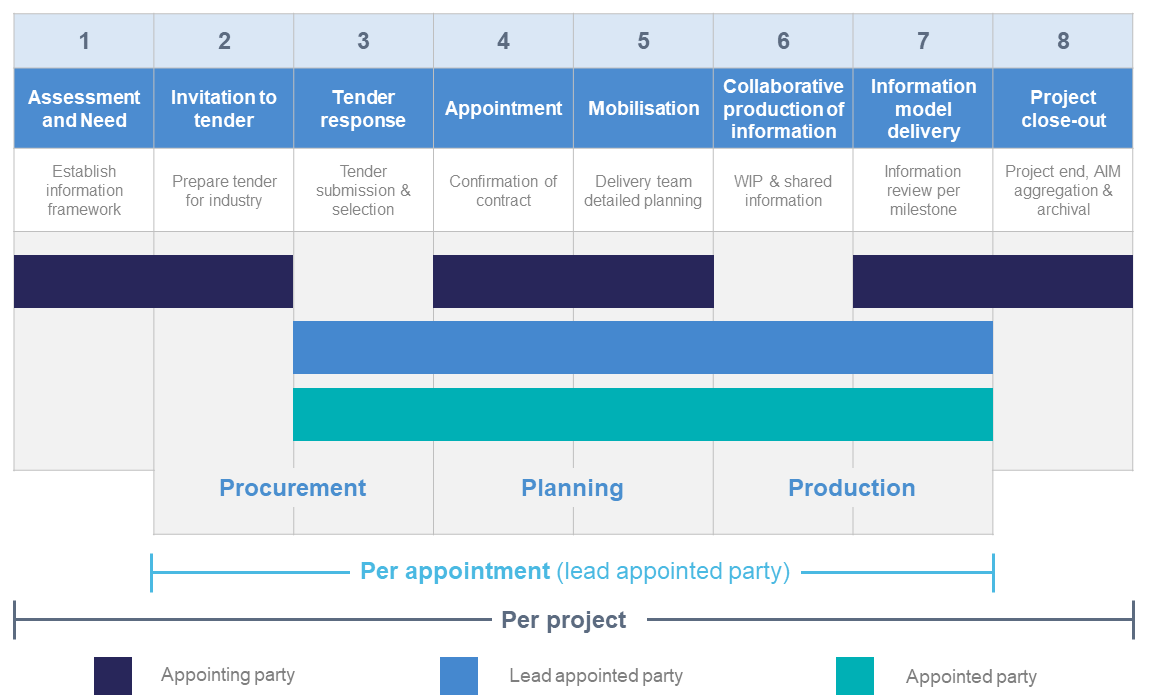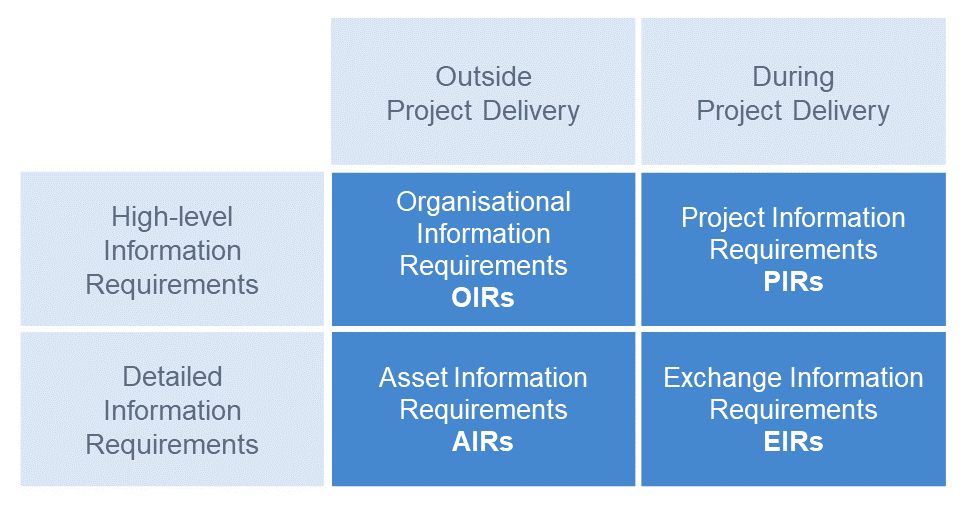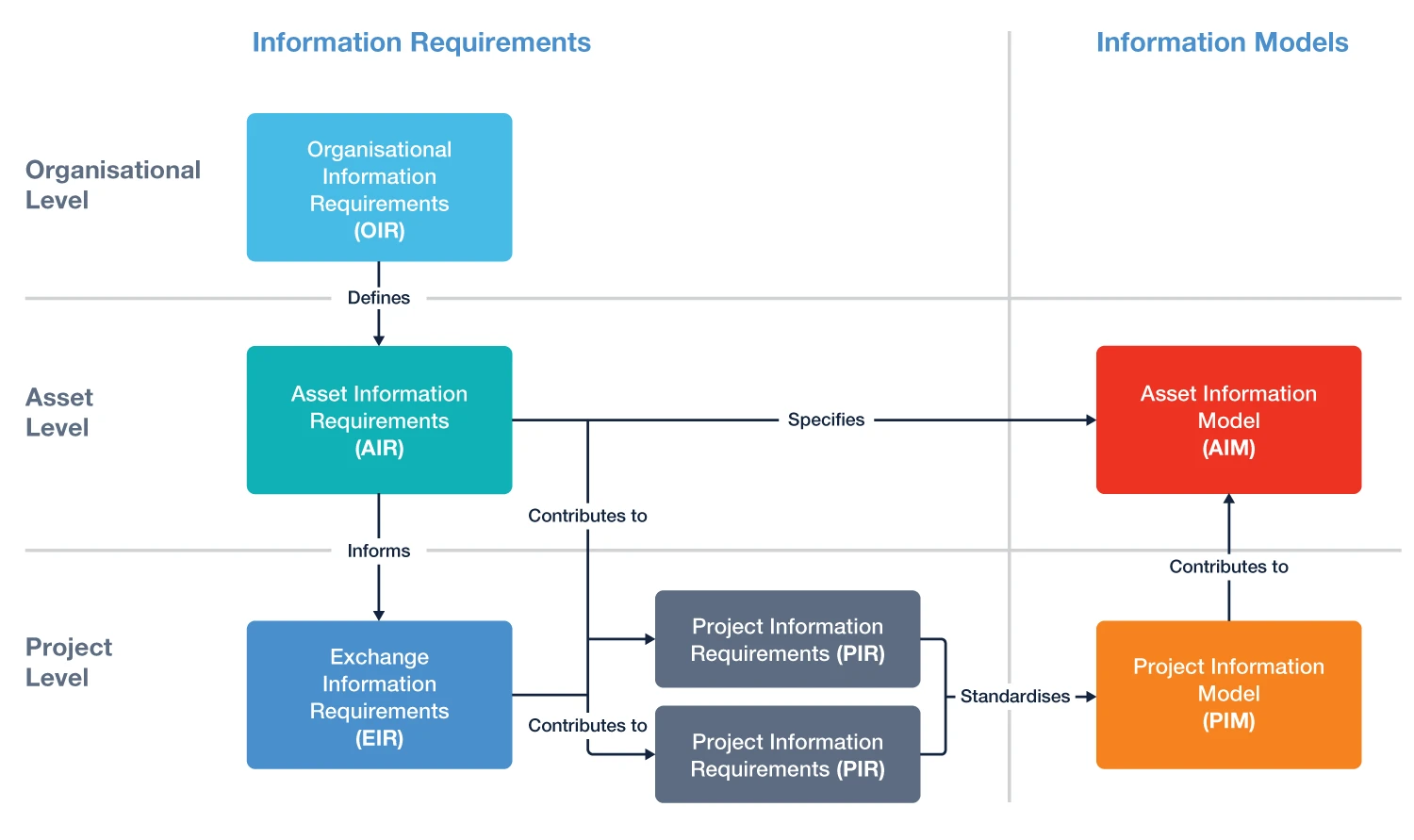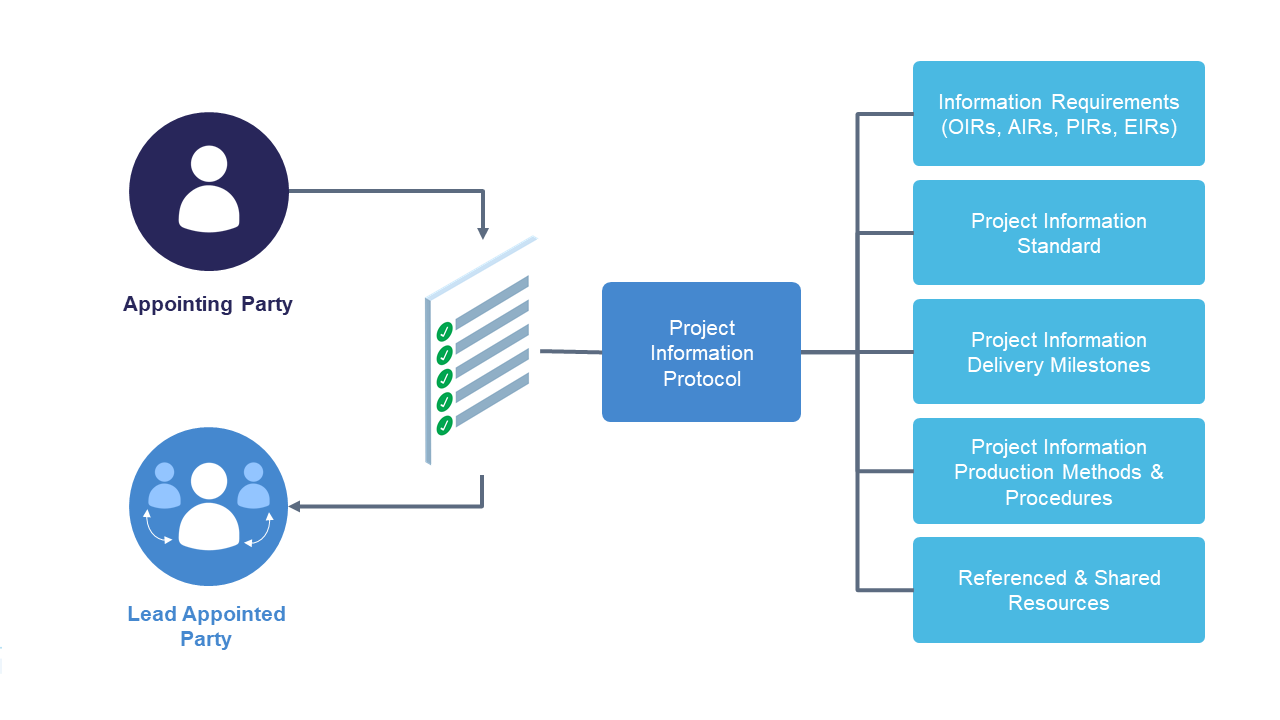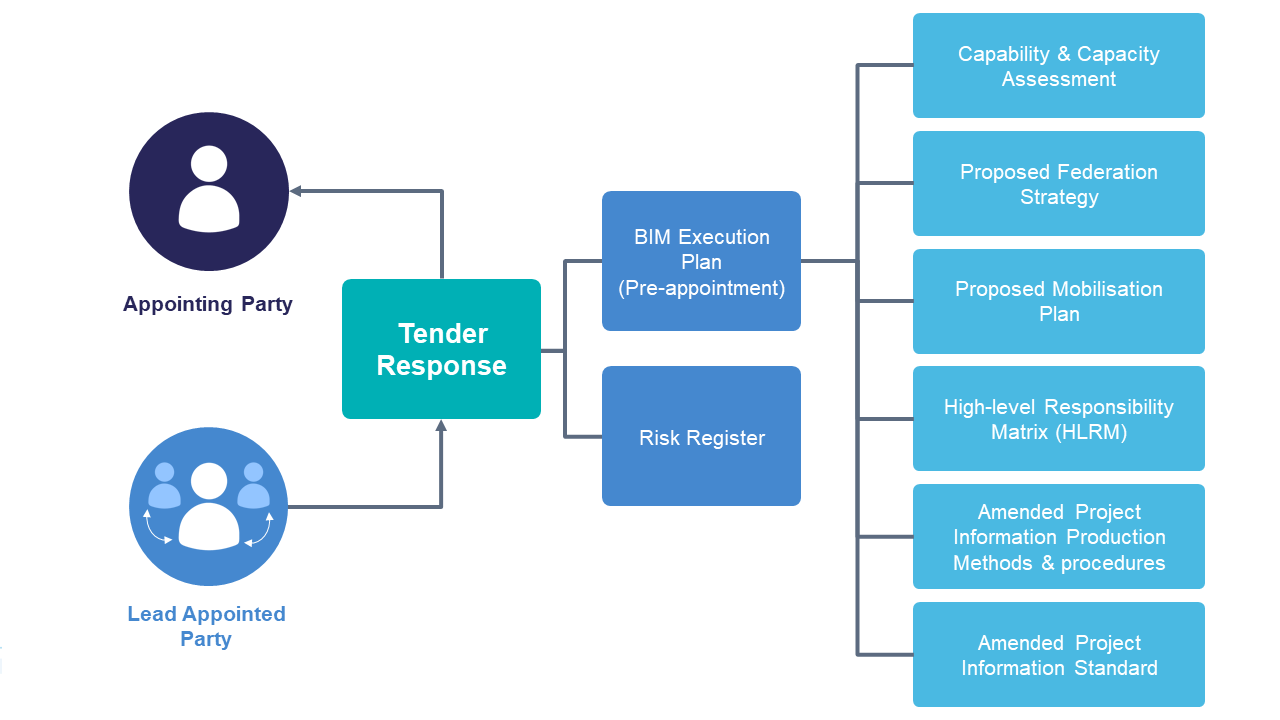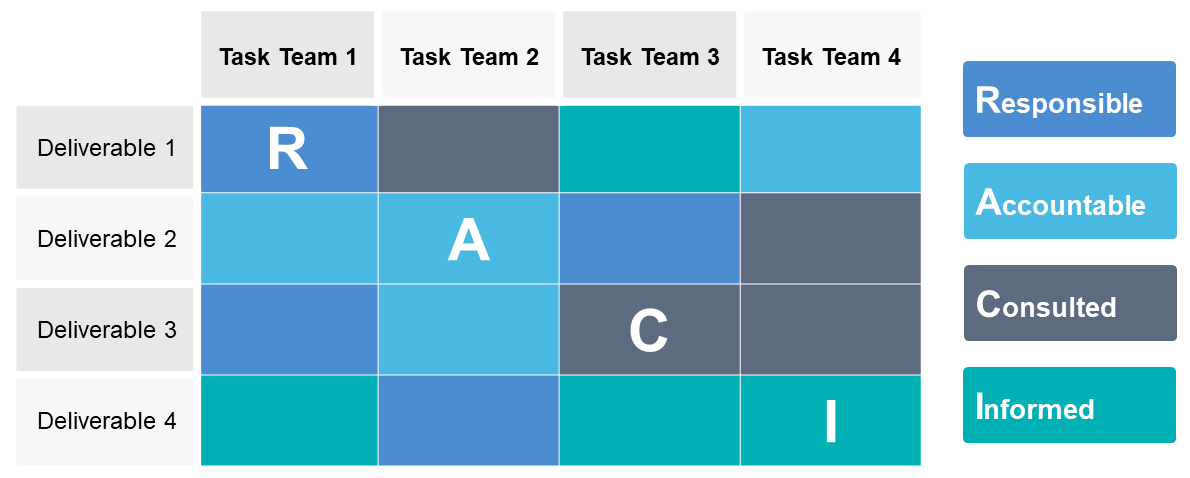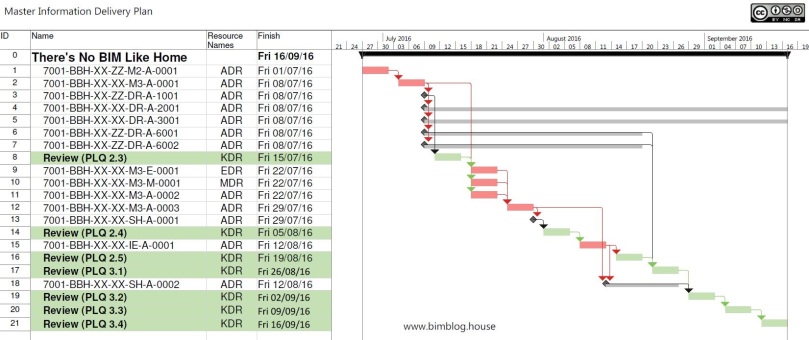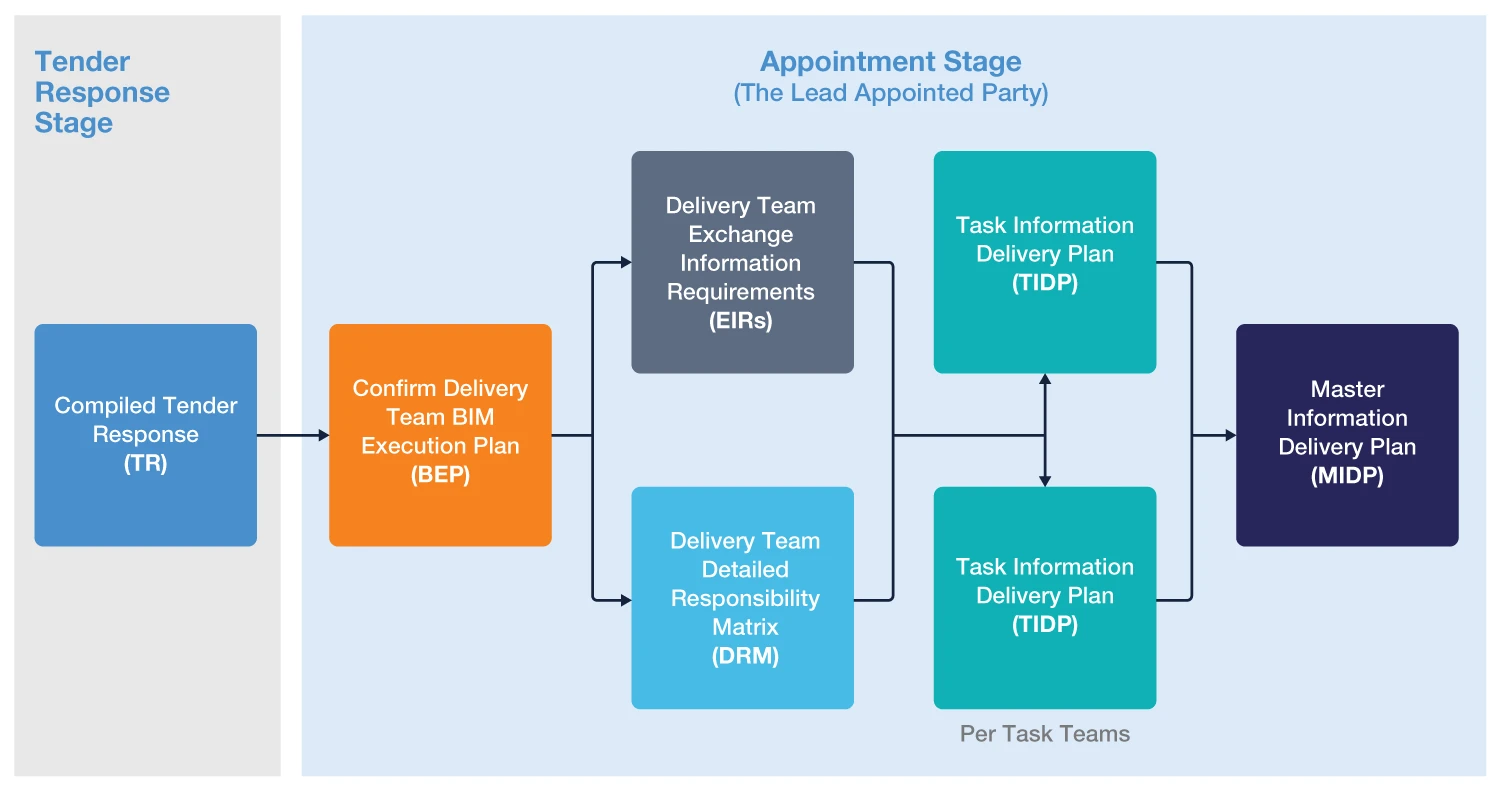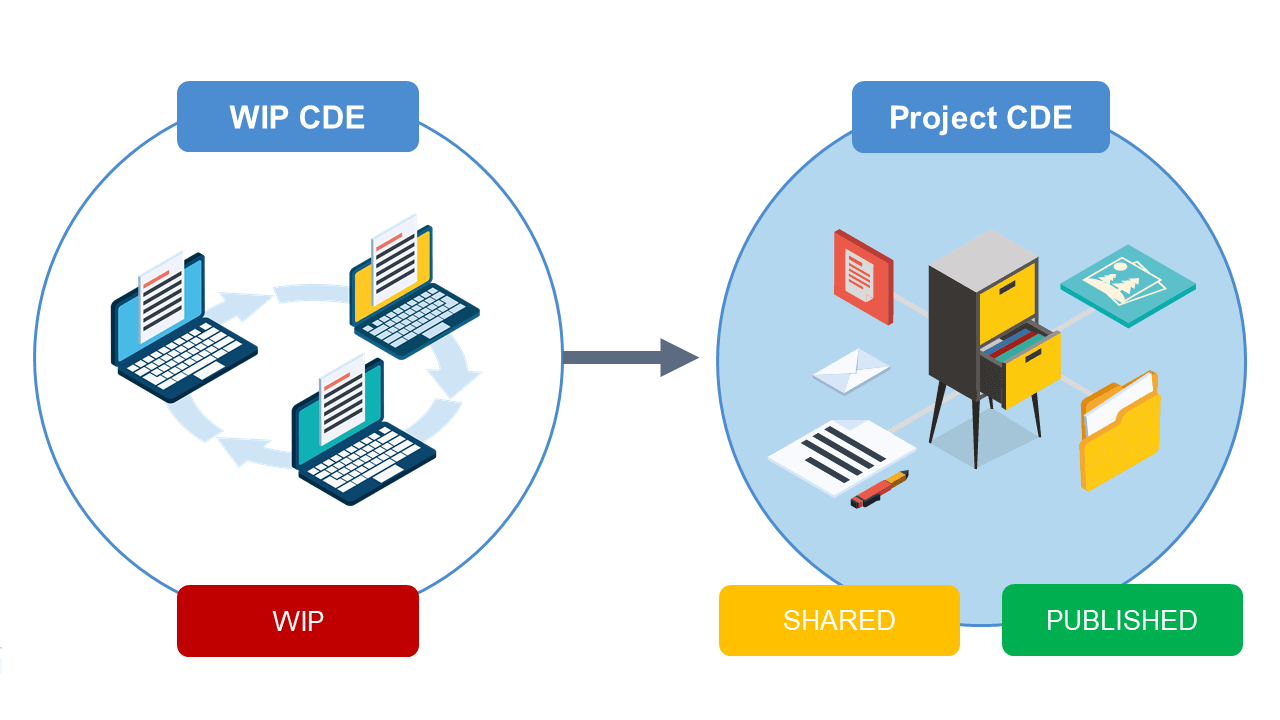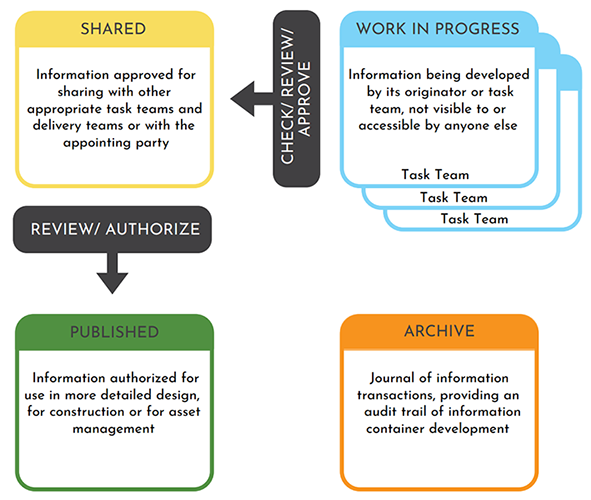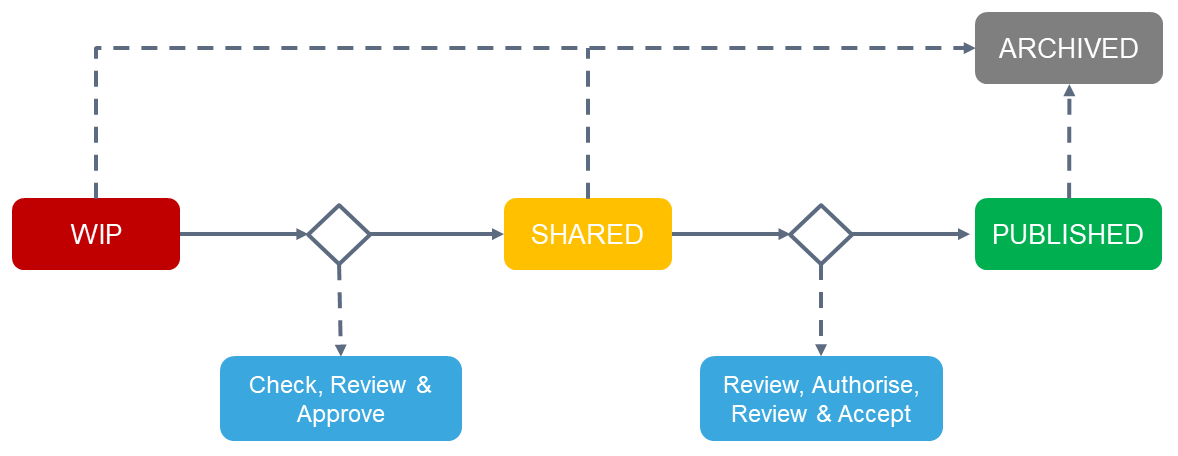The Ultimate Guide to ISO 19650 in 2025
This guide provides a comprehensive overview of the ISO 19650 series. The aim is to distil the key concepts, principles, and processes of the standard and to clearly explain them to you in layman’s terms. Whether you’re an asset owner or operator, consultant or contractor, client or council, we hope this guide proves helpful in your ISO 19650 journey.
This guide is an accompanying post to our Common Data Environment (CDE) Guide. It is highly recommended reading both guides as the ISO 19650 information management process must be understood within the context of its enabling technologies.
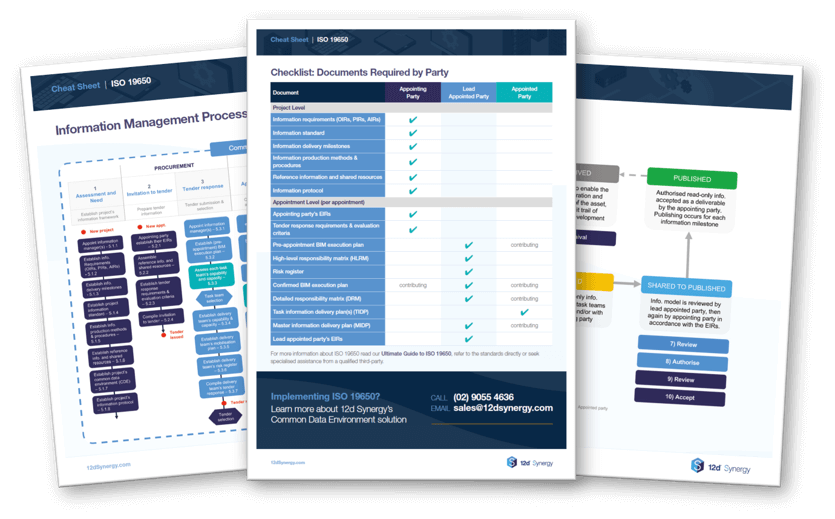
Chapter 1:
Overview of the ISO 19650 Series
What is ISO 19650
ISO 19650 is a series of international standards which define a common unified framework for the effective collaborative production and management of information across the full lifecycle of a built asset using building information modelling (BIM).
Ultimately, it ensures that built environment projects are delivered on time, within budget and to standard.
ISO 19650 benefits all stakeholders throughout the asset lifecycle, including clients, consultants, contractors, authorities & asset owners, and operators.
ISO 19650 Explained: The Basic Principles
Beneath the befuddling terminology and details, the basic principles of ISO 19650 are simple:
- The client clearly defines project requirements, standards & milestones and communicates these to the delivery team.
- The delivery team plans a schedule and mobilises resources and technology to meet the client’s requirements, standards & milestones.
- Information is collaboratively produced and managed between task teams (i.e., across disciplines).
- Information is managed in a common data environment (CDE) ensuring the right people work on the right information at the right time.
- Information produced is reviewed and approved at each level (task team, delivery team, project team), with access and sharing controlled accordingly.
- Information is created and archived with the ongoing operation and maintenance of the asset in mind.
Creation of the ISO 19650 Series
ISO 19650 is a series of standards set by the International Organisation of Standardisation (ISO). The standard was developed from the UK’s now superseded PAS 1192, a ‘tried and tested’ BIM information standard established by the British Standards Institution (BSI) in 2007. ISO sought to adapt and elevate this standard to an international level.
The 19650 series was developed by ISO/TC 059/SC 13 with consultation from an international panel of industry experts and associations. This included 31 participating and 14 observing countries, which are illustrated below.
ISO 19650 Committee (ISO/TC 59/SC 13) Participation Map. Source: ISO
What Does ISO 19650 Include and When Was It Published?
ISO 19650 Series Components: Parts 1 to 6
ISO 19650-1 – Part 1: Concepts and principles
An introduction into the concepts and principles of the information management process, which is expanded upon in the following parts.
Published December 2018. View standard.
ISO 19650-2 – Part 2: Delivery phase of assets
Details the process for the management and collaborative production of information during the delivery phase of assets.
Published December 2018. View standard.
ISO 19650-3 – Part 3: Operational Phase of assets
Sets out the information management process for the management and collaborative production of information during the operational phase of assets. Provides additional guidance for asset owners.
Published August 2020. View standard.
ISO 19650-4 – Part 4: Information exchange
Recommended concepts and principles for the exchange of information between parties throughout the lifecycle of an asset. For both receivers (appointing party) and providers (lead appointed party, appointed parties) of information.
In development (at time of publishing). View standard.
ISO 19650-5 – Part 5: Security-minded approach to information management
Provides a framework to assist organisations adopt a security-minded approach to managing information relating to sensitive assets.
Published June 2020. View standard.
ISO 19650-6 – Part 6: Health and Safety
Expected to concern the production and management of health and safety information on built environment projects.
In development (at time of publishing). View standard.
In the meantime, you can read the superseded PAS 1192-6:2018 Specification for Collaborative sharing and use of structured Health and Safety information using BIM as ISO 19650 is likely to mirror this standard.
National Annexes
Appended to the standard are a set of region-specific requirements, providing opportunities to clarify how ISO 19650 should be implemented within that region. The national annex are generally the only standards applicable for use in that region: e.g., AS ISO 19650 series for Australia or BS ISO 19650 series for the UK.
ISO 19650 in Australia
BD-104 is the committee responsible for the Australian annex (AS ISO 19650.1:2019, AS ISO 19650.2:2019, AS ISO 19650-3:2021 and AS ISO 19650.5:2021, at the time of publishing this guide) which are available for purchase through Standards Australia.
ISO 19650 in New Zealand
New Zealand does not have a national annex for ISO 19650. Instead their deployment of the standard is outlined in The NZ BIM Handbook by the BIM Acceleration Committee. This resource includes a number of document templates to assist compliance.
ISO 19650 Overview: ‘The Who, Why, What, and How of ISO 19650‘ by Paul Shillcock, Managing Director of Operam and author of ISO 19650-2 and co-author of PAS 1192-2 and PD 19650.
The Benefits of ISO 19650
ISO 19650 can benefit all stakeholders on a project or asset, including asset owners, consultants, contractors and authorities. The ISO 19650 series establishes an international best practice process for the creation, management and exchange of built asset and project information.
- Ensuring the right people work on the right information at the right time
- Facilitating greater collaboration and coordination of information amongst stakeholders, reducing clashes, rework, and duplication
- Reduced information wastage and rework through clearly specified information requirements
- Information is progressively produced through a managed process, improving the accuracy and validity of information
- An audit trail of information development and exchange is captured across the delivery and operation of a built asset
- Information has a specific purpose and is clearly identified with common standards and meta-data attributes
Chapter 2:
ISO 19650 Part 1: Guidance: Concepts and Principles
- The Parties and Teams involved
- The Information Management Process
Information Management: Parties and Teams
The information management process describes the teams, parties and their roles in the creation and management of information.
Parties
Appointing Party
The appointing party is the establisher of the work. This is often the client, asset owner or operator. They are the receivers of information, as well as the works provided by the delivery team/s. There is only one appointing party per project.
Example: a government department or developer.
Lead Appointed Party
The lead appointed party is an organisation directly appointed (employed) by the appointing party to provide works, goods or services concerning an asset. This is often the engineering consultant, JV arrangement or contractor. The lead appointed party takes the role of coordinator between the delivery team and appointing party. They are providers of information, and there can be multiple lead appointed parties per project.
Example: an engineering consultancy, general contractor, project management consultancy.
Appointed Parties
Appointed Parties are organisations who are subcontracted by a lead appointed party to assist in the provision of works, goods or services. They are providers of information for the lead appointed party, not the appointing party.
Example: designers, planners, project managers, surveyors, suppliers, vendors.
ISO 19650 Party Appointment Relationship Diagram
Below is an example of the appointments and parties of a project team for a typical civil project:
ISO 19650 project team appointment relationships diagram for a typical civil project
Teams
Task Team
The task team is a team (or an individual) responsible for performing specific tasks in the production and management of information. Task teams are often created around a discipline, for example: civil design, surveying, traffic/ signal, geotechnical or structural design. There are often multiple task teams within the delivery team.
Delivery Team
The delivery team includes all individuals responsible for the creation and management of information. It is the lead appointed party and all its appointed parties. There may be multiple delivery teams on a project.
Project Team
The project team is all parties involved in the delivery process of an asset, the appointing party, lead appointed party/ parties, and all appointed parties. This includes both receivers and creators of information. There is only one project team on the project.
ISO 19650 Teams Hierarchy Diagram: Project, Delivery and Task teams.

The Information Management Process
Now that you understand the parties and teams on a project, I’ll now introduce you to the lifecycle of a project, known as the information management process.
The information management process has 8 stages which will be established below, and then covered in greater detail in the following sections of this guide.
Note: the below summaries are simplified to help you understand the process at a high-level before we later delve into greater detail.
1) Assessment and Need
The appointing party determines why works are to be carried out – e.g., improve a highway’s capacity and safety – and establish the information requirements, information standards, and project milestones.
2) Invitation to Tender
The appointing party establish their tender response evaluation criteria, and then issue a tender inviting organisations to formally bid for the works. E.g., a tender for the detailed design.
3) Tender Response
Prospective delivery teams prepare and submit a response demonstrating their approach to the works and assess their capability and capacity.
4) Appointment
Tenders are evaluated and the successful delivery team is selected, known as the lead appointed party. The delivery team undergoes detailed planning and prepares a schedule outlining how works will be completed to meet the information requirements and milestones.
5) Mobilisation
The delivery team ensure they have the people, processes, and technology to deliver the works, and teams are trained to do so. Procedures and technology are tested and documented.
6) Collaborative Production of Information
Information is generated, coordinated, checked, reviewed, and approved by the delivery team for publishing with the appointing party. Information is generated by task teams, and then upon approval, shared to other task teams for reference. I.e., the road design is shared to the lighting and signals task team.
Project Information Model (PIM)
The output being the creation of a project information model (PIM). PIM is a collection of information that responds to the specific requirements set out in the appointing party’s exchange information requirements (EIRs) and provides all the information required to carry out the delivery phase of an asset. Examples include 3D models, databases, spreadsheets, or documentation.
7) Information Model Delivery
The appointing party reviews the published information model against their acceptance criteria and either approve or reject it as a contractual deliverable. This is repeated for each milestone and information deliverable on the project.
8) Project Close-out & Asset Information Model (AIM) Aggregation
Once approved, work is completed and the appointment(s) ends. The information is archived and aggregated into the asset information model (AIM) for the ongoing operation and maintenance of the asset.
Asset Information Model (AIM)
The ultimate output of the information management process is the creation of an asset information model (AIM), which provides all the information required to perform the operation phase of the asset. At the end of the project, some components of the PIM may be transferred to the AIM, while unnecessary data is archived. The AIM can include graphical models, non-graphical data and all necessary documentation for the ongoing maintenance, operation, and management of the asset.
Phases of the Information Management Process
Stages 2 to 7 are repeated for each appointment on the project. For example, once for an appointment with an engineering consultancy for the design phase, and then again for another appointment with a contractor for the construction phase.
Steps 1 & 8 occur only once per project.
The information management process is characterised by three phases, as outline below:
- Steps 2 to 3 is the procurement phase
- Steps 4 to 5 is the planning phase
- Steps 6 to 7 is the production phase
Summary of the Delivery of ISO 19650 Part 2 on projects: Information Management Stages, Phases and Involvement
Chapter 3:
ISO 19650 Part 2: Detailed Overview
1) Assessment and Need
The appointing party determines why works are to be carried out, and establishes the project’s information framework, consisting of the following:
- Information requirements (OIRs, PIRs, AIRs & EIRs)
- The project information standard
- Information delivery milestones
- Project information production methods & procedures
- Reference information and shared resources
- The project’s common data environment (CDE); and
- The project information protocol.
But before all this, the appointing party must first establish the project’s Information Manager(s). The Information Manager is one or more individuals from within their organisation or from a third party who leads the information management function for the project.
With the information manager(s) now selected, the appointing party can now define the project’s information framework.
Information Requirements
The efficient and effective collaborative production of information starts with clear and well-defined information requirements.
Information Requirements: “specify for what, when, how and for whom information is to be produced” (ISO 19650-1:2018 (3.3.2)).
ISO 19650 places onus upon the appointing party to understand and specify what project and asset information is required at the start of the project, and then to communicate this with the lead appointed party.
Effective information requirements include the following:
- Requirement owner: who the information is for
- Requirement description: why the information is needed
- The form (how it is presented) and format (how it is encoded) of information
- Level of information need: the minimal required quantity and granularity information
- Acceptance criteria: how the information is to be reviewed
- Supporting information: documentation, standards or resources to assist information production
- Exchange date: when the information is to be delivered
- Organisational information requirements (OIR): organisational objectives, needs and necessities
- Project information requirements (PIR): information for the delivery phase of an asset
- Asset information requirements (AIR): information for the ongoing operation and maintenance of an asset
- Exchange information requirements (EIR): how, when, and what information will be delivered
Detailed Information Requirements (AIR and EIR) specify how information should be produced and exchanged.
Matrix diagram of the ISO 19650 information requirements by high-level or detailed, and outside or during project delivery.
Organisational Information Requirements (OIR)
High-level requirements that define the information needed to meet the appointing party’s strategic business objectives and the needs of its asset management system. OIR ensure the correct information feeds back into an organisation to support wider business decisions. For example, the information needed by a rail operator is very different to that of a manufacturing facility. OIR are the starting point after which all other information requirements are defined.
Project Information Requirements (PIR)
High-level project-specific requirements that define the information needed at key decision points during the delivery of an asset. Key decision points are when the appointing party makes a decision upon information provided by the delivery team and defines the information delivery milestones.
Asset Information Requirements (AIR)
Detailed requirements that outline the information needed to operate and maintain the asset throughout its lifecycle. AIR are formed from OIR and define what information is required and how it should be delivered for the asset information model (AIM). The goal of AIR is to ensure the right people have access to the right information to effectively maintain and operate the asset.
Exchange Information Requirements (EIR)
Detailed appointment-specific requirements that precisely specify what information is needed at each information milestone, to enable parties to complete necessary activities during the delivery and operation phases of an asset. EIR are collectively defined from the OIR, PIR and AIR, and are developed per appointment. The appointing party sets EIR for their appointment with the lead appointed party, and the lead appointed party sets their own EIR for each appointment with their appointed parties.
An example being a spreadsheet detailing the types of information that need to be delivered at each project milestone, including the required forms and formats for information.
ISO 19650 Flow of Information Requirements and Information Models Diagram
Level of Information Need
A key principle of ISO 19650 is the minimisation of ‘information waste’. Producing too much information is a waste of time and resources, while producing too little can lead to ill-informed decisions and mistakes.
To achieve this, the appointing party must clearly state their level of information need: the minimum quantity and granularity of information required to meet its needs.
Information should not:
-
- Exceed the required level of information need
- Extend beyond the scope
- Lack a specific purpose for its use
- Duplicate information created by other task teams
- Contain superfluous details
Level of information need is defined by the appointing party for each information deliverable as outlined in both the project’s information standard and the EIRs.
Information Standard
The project’s information standard is a document formed by the appointing party, that specifies how all information is to be produced. The goal is to ensure a consistent approach for the structuring and classification of information that is most appropriate for the project. This document may include languages, units, origins & orientations, coordinate systems, naming conventions, codifications, and text, dimension & line styles.
Information Delivery Milestones
A project’s information delivery milestones are set by the appointing party and specify when information is to be exchanged on a project. The dates of milestones should be informed from the PIRs, reflecting the project’s key decision points and the information deliverable(s) required for each.
Information Production Methods and Procedures
The project’s information production methods and procedures is a document produced by the appointing party that details the processes for how work should be carried out by the delivery team. This may include how information should be:
-
- Generated, reviewed, and approved,
- Secured and shared; and
- Exchanged to the appointing party.

The appointing party should share supporting information to assist in the production and management of information. Examples of reference information and shared resources can include:
-
- Existing asset information
- References to relevant industry standards
- Supporting documents or guidance material
Establish the Project’s Common Data Environment (CDE)
The appointing party must also establish the project’s common data environment (CDE). If deemed appropriate, the appointing party can also assign the role of establishing the project’s common data environment to the Lead Appointed Party. The CDE is a central repository to collect, manage and disseminate information. The CDE will be covered in greater detail later in the article.
For more information on the commmon data environment (CDE) and information management process, read our guide here.
Project Information Protocol
The project’s information framework is then compiled with the project information protocol, a legal contract which defines the parties’ rights, roles, and duties in compliance with the project’s standards. The project information protocol is communicated to prospective lead appointed parties and signed by the selected lead appointed party upon a successful tender response. The protocol formalises the appointment between appointing party and lead appointed party.
ISO 19650 Appointing Party’s Project Information Framework
Chapter 4:
Procurement Phase
2) Invitation to Tender
Once the appointing party has defined their information framework, they then establish the tender response requirements and evaluation criteria, and issue a tender inviting organisations to formally bid for the works.
Tender Response Requirements and Evaluation Criteria
Tender response requirements are established by the appointing party and outline the minimum conditions that the prospective lead appointing party is to meet and demonstrate in their tender response.
The appointing party also establish the degree to which they will evaluate tenderers meeting these requirements, known as the tender evaluation criteria.
The goal of the tender response requirements and evaluation criteria is to ensure a consistent and fair approach to tender selection.
Once finalised, these requirements and evaluation criteria are compiled, and the tender is issued to the industry. The tender invitation includes the project information protocol and its compiled requirements and standards.
3) Tender Response
Prospective Delivery Teams prepare a tender response demonstrating their approach to the works and assess their capability and capacity for achieving this. The tender response provides a basis for the appointing party to evaluate and select the lead appointed party who is most suitable to carry out the works.
The tender response is a document supplied by prospective lead appointed parties and contains the following:
-
- Pre-appointment BIM execution plan
- A risk register
BIM Execution Plan (Pre-appointment)
The pre-appointment BIM execution plan (BEP) is a document outlining the prospective delivery team’s proposed approach, capability, and capacity to meet the appointing party’s exchange information requirements (EIRs).
The pre-appointment BEP is produced by prospective lead appointed parties and their anticipated appointed parties. The document generally includes the standards, roles & responsibilities, and the protocols that are used as a basis for a BIM project, and demonstrates the overall approach for the model generation, information production, collaboration & exchange, and BIM deliverables.
Note: like many documents in the ISO 19650 information management process, the BEP is a living document that should be continually updated throughout the project lifecycle.
The pre-appointment BEP often includes the following:
-
- Proposed information delivery strategy
- Proposed federation strategy
- A high-level responsibility matrix
- Proposed mobilization plan
- Capability and capacity assessment
High-level Responsibility Matrix
The high-level responsibility matrix outlines the initial roles and responsibilities for each of the prospective task teams. The matrix establishes what information will be produced, when and by which task team. The goal being to improve collaboration amongst the delivery team through clearly defined and communicated responsibilities.
The high-level responsibility matrix is later developed into a detailed responsibility matrix upon success tender response.
Capability and Capacity Assessment
The pre-appointment BEP must demonstrate that each task team have both the capability and capacity to produce and manage the information in line with the EIRs.
Capability: having the right individuals with the knowledge, skills, and experience to produce information in line with the proposed information production methods and procedures. As well as the enabling technologies (software, hardware, IT) to do so.
Capacity: having the right number of individuals available to produce information within the agreed delivery milestones (timeframe).
Amended Information Production Methods and Procedures and Information Standard
The pre-appointment BEP also provides the prospective delivery team with the opportunity to identify additions and/or amendments to the project’s information production methods and procedures, and information standard, as required.
Risk Register
The risk register is created after completion of the pre-appointment BEP. The risk register identifies all risks associated with the prospective delivery team’s management and production of information throughout the appointment, as well as how they intend to manage said risks.
ISO 19650 Prospective Lead Appointed Party Tender Response Documents
Chapter 5:
Planning Phase
4) Appointment
Tenders are evaluated by the appointing party and the successful delivery team is selected, known as the lead appointed party. The delivery team (led by the lead appointed party) then undergoes detailed planning and prepares a schedule outlining how works will be completed.
BIM Execution Plan (Confirmed)
Once the appointment has been awarded, the delivery team develops the BEP to comprehensively define how the EIRs will be met. In essence, the BEP sets out the who, what, when, and where in a BIM project.
The BEP should be developed with, and agreed by, each appointed party so it is representative of the overall delivery team, not just the lead appointed party.
The confirmed BEP includes the following:
-
- Detailed responsibility matrix (DRM)
- Task information delivery plan (TIDP)
- Master information delivery plan (MIDP)
Detailed Responsibility Matrix (DRM)
The lead appointed party refines the initial high-level responsibility matrix into a detailed responsibility matrix. This matrix establishes a set of EIRs for each appointed party, identifying:
-
- What information is to be produced
- When the information is to be exchanged
- Who the information is to be exchanged with
- The task team responsible for its production
A RACI matrix can be used for this, which outlines the task teams who are responsible, accountable, consulted and informed for each information deliverable.
ISO 19650 Delivery Team RACI Matrix Diagram
Task Information Delivery Plan (TIDP)
The task information delivery plan (TIDP) is a detailed plan that establishes how each task team will provide the information deliverable they have been assigned in the detailed responsibility matrix. This information may include models, documents, schedules, calculations, reports, etc.
The purpose of the TIDP is to identify specifically what information will be produced, which task team will produce it, how long it will take to produce and when it will be delivered.
The task information delivery plan is often formatted as a spreadsheet or Gantt chart and is produced by each task team within the delivery team. The key to this plan is the task team’s estimated time and resources needed to meet the lead appointing party’s EIRs so project scheduling can occur.
Master Information Delivery Plan (MIDP)
The lead appointed party compiles each of the task teams’ TIDPs and generates a master information delivery plan (MIDP). The purpose of the MIDP is to allow the lead appointed party to check the delivery plans across each task team and ensure they align with the overall delivery schedule and project milestones.
The MIDP combines each of the task teams’ TIDPs into a single schedule, containing all the information deliverables that the delivery team will produce, the sequence they are to be produced in, and when they are to be exchanged and delivered. From this, an overall production timeline is estimated.
Example ISO 19650 Master Information Delivery Plan (MIDP). Source: There’s No BIM Like Home
ISO 19650 Delivery Team Planning Flow Graphic
5) Mobilisation
The mobilisation stage provides the delivery team with an opportunity to ensure they have the people, processes, and technology in place to deliver the information, and all teams are suitably trained before work commences.
The information production methods & procedures, as well as IT technologies (such as the CDE), are tested and documented.
The mobilisation stage involves the following:
-
- Confirm the resources availability of each task team and engage additional appointed parties if additional capacity is needed.
- Develop and deliver educational resources, e.g., produce information management guides, and share information standards.
- Develop and deliver training, ensuring all individuals can generate and/or manage information.
- Procure, implement, configure, and test IT hardware and software, for example the delivery team’s CDE. Ensure all appointed parties and task teams can access the CDE suitably.
- Test the information production methods & procedures and ensure they’re understood by all members of the delivery team.
Phew! And after all that diligent planning and project management, the actual work can finally now commence. Welcome to the production phase comrade.

Chapter 6:
Production Phase
6) Collaborative Production of Information
In this stage information is generated, coordinated, checked, reviewed, and approved by the delivery team for publishing with the appointing party. Information is generated by task teams, and then upon approval, shared to other task teams for reference. I.e., the road design is shared to the lighting and signals task team.
The Common Data Environment (CDE)
At the heart of BIM is a collaborative process for producing, managing, and sharing information & digital models. This process requires a collaborative platform to do so.
This is what the common data environment (CDE) is. It’s the technology that enables the ISO 19650 information management process.
The CDE can include a data management system, such as our own software 12d Synergy.
The CDE includes both a ‘CDE solution’ and a ‘CDE workflow’, which I’ll walk you through below. But first, we’ll introduce you to the overall principles of the CDE.
For more information on the CDE read our Common Data Environment guide here.
Principles of the CDE
ISO 19650 states that information should be:
- Produced once and re-used many times (eliminate rework)
- Continuously shared and trusted
- Have a clear auditable history, identifying where the information came from, who amended it, and when
- Checked, reviewed, and approved before it is shared with other members of the delivery team
- Be clearly identifiable by its state, revision, and status, and have access controlled accordingly
ISO 19650 uses the term ‘information container’ to denote files, models, documents, datasets, etc. Each information container (i.e., file) should have a unique ID (i.e., file name) in accordance with the agreed naming convention.
ISO 19650 also states that the following metadata values should be assigned to each information container:
-
- State: the above four stages (WIP, Shared, Published and Archived)
- Status code (Suitability): the purpose or permitted use of an information container (e.g., ‘for coordination’ or ‘suitable for PIM authorisation’)
- Revision code: tracks information version
- Classification code: the categorisation of information using a standardised system, e.g., Uniclass 2015
The CDE Solution
Due to the multifaceted nature of an information model, the CDE is likely to be an ecosystem of integrated IT systems rather than a single product. These can include data management systems, geospatial information systems and engineering management systems.
ISO 19650 standard places onus on the appointing party to implement and manage a CDE for the whole project. However, in practice delivery teams will likely operate in separate (but integrated) systems.
Like all big changes, the industry will be hesitant to adjust. There are concerns to having design, construction and the client all operate from the same system, and the legal and financial ramifications associated. For example, if permissions are not set correctly or security is not managed well. It’s likely that organisations will want to control their work in progress data within a separate system (the ‘WIP CDE’) that feeds back to a central repository (the ‘project CDE’).
Nonetheless, the CDE’s fundamental principle of a centralised repository for all project parties can still be realised through an ecosystem of separate (but connected) CDEs. For instance, task teams generate information in the WIP state within their own CDE, and then authorised files are transferred to the project CDE for review.
ISO 19650 Distributed Common Data Environment (CDE) Solution Diagram
‘Common data environment (CDE) in the ISO 19650 World‘; a presentation presented by Mitch McPherson at our online 12d Tech Forum 2021. Mitch explores some of the core ISO 19650 requirements of a CDE, their practical application, the CDE ecosystem and how one size almost never fits all.
Feature Demonstration: DataFlows; a presentation presented by Connie Butler explores how DataFlows can help streamline information across platforms.
CDE Workflow
The CDE workflow organises the flow and management of information across the whole lifecycle of an asset across four states: work in process (WIP), shared, published, and archived.
ISO 19650 Common Data Environment (CDE) Workflow States. Source: UK BIM Framework Information Management According to BS EN ISO 19650 Guidance Part C
Work In Progress (Creating Information)
The work in progress (WIP) stage is where information production occurs amongst task teams. Files are editable and are unapproved for sharing with the wider delivery team. Access is controlled by the CDE to prevent other task teams from working on, referencing or issuing draft information.
- Verify: Ensure task teams have everything before generation occurs. This includes:
- Understand EIRs and acceptance criteria
- Understand the project’s information standard
- Have access to the CDE and shared resources
- Know which information production methods and procedures to use
- Generate: Information is created in line with the project’s:
- Exchange information requirements (EIRs)
- Information standard
- Task Information Delivery Plan
- Information production methods & procedures
- Level of information need
- Coordinate: Information is continually coordinated with reference information shared by other task teams in the CDE. E.g., a change to the civil design model is reflected in the structural model.
WIP information is shared with other task teams after passing a QA check and technical review. Shared information is NOT approved as a deliverable but approved to be shared with other members of the delivery team. E.g., shared with other disciplines.
- Check: Information undergoes a QA check against the project’s information standard and information production methods and procedures. This checks the information container’s metadata not the contents. Metadata includes container ID, status, revision and classification codes.
- Review: Next, a technical review of the contents within an information container in accordance with the lead appointed party’s EIRs and the TIDP occurs. This review process should be a consistent methodology that’s outlined in the project’s information production methods and procedures. Reviews and sharing should be timely to ensure the information model is continuously coordinated.
- Approve: If the review is successful, the information is then approved for sharing with other task teams of the delivery team.
Shared information is information that has been verified to be shared with the delivery team. Shared information is read-only and must be the most current approved revision of the information container. Shared information must only be used for the suitability for which the information has been approved.
7) Information Model Delivery
The information model is federated and published for the appointing party’s review against their acceptance criteria. They will then either approve or reject it as a contractual deliverable.
The information is then approved internally for publishing with the appointing party. Publishing occurs for each information delivery milestone, as specified by the appointing party’s EIRs.
- Review: The information is coordinated into an information model and undergoes a technical review by the lead appointed party in accordance with:
- The MIDP deliverables
- Appointing party’s EIRs
- Lead appointed party’s EIRs
- The acceptance criteria
- Level of information need
- The project’s information production methods and procedures
- Authorise: If the technical review is successful, the information model is authorised to be issued to the appointing party.
- Review: The appointing party performs a commercial review of the information model in accordance with:
- Appointing party’s EIRs
- The acceptance criteria
- Level of information need
- Exchange dates recorded in the MIDP
- Acceptance: If the commercial review is successful, the appointing party approves the information as a contractual deliverable and the information model transitions to a published state.
Published (Information Deliverable)
Published information is information that has been accepted as a deliverable by the appointing party. It is read-only information and must be the most current authorised revision of the information container. Published information is accessible by the project team.
This process is repeated for each information delivery milestone set out in the appointing party’s EIRs.
For more informaton on the Common Data Environmnet, including the CDE workflow, CDE solution and metadata, read our CDE guide here.
Chapter 7:
Project Close-out
8) Project Close-out and Asset Information Model (AIM) Aggregation
Archived (Information Archival)
Once all delivery milestones have been met and all appointments have been completed, the information model is aggregated and archived to enable the ongoing operation and maintenance of the asset. This ensures there’s a definitive final version of the project information model available in case it needs to be referred to by the appointing party after the project has been completed.
Information archival is essential for knowledge, as well as to meet regulatory and legal requirements.
Archived information is read-only information and is only visible to the appointing party and the CDE administrator. Archived information includes the project history (file change history) and other metadata.
- Archive: The whole project information model (published information), project history (change history) and other metadata is archived to enable the ongoing maintenance and operation of the asset.
ISO 19650 Common Data Environment (CDE) Workflow Diagram
Asset Information Model (AIM) Aggregation
The ultimate output of the information management process is the creation of an asset information model (AIM), which provides all the information required to operate and maintain the asset. At the end of the project, some components of the PIM may be transferred to the AIM, while unnecessary data is archived. The AIM can include graphical models, non-graphical data and all necessary documentation for the ongoing maintenance, operation, and management of the asset.
Capture Lessons Learnt
An important, but often overlooked step, is to review and capture lessons learnt and communicate these with stakeholders to enable the continuous improvement of the delivery and operation of built assets. This should be undertaken by the appointing party with assistance from the lead appointed party.
ISO 19650 Training and Certification
Now that you understand the concepts and principles of the ISO 19650 information management process, we’ll now discuss training, certification, and accreditation of the standard.
Accreditation of the standard may be desired by your organisation to demonstrate to stakeholders your conformance to ISO 19650 and industry best practice. For example, some clients may require accreditation to bid for and win work.
Importantly, the 19650 series should be applied in a way that is proportionate and appropriate to the scale and complexity of the asset or project. The standard might not need to be implemented it its entirety. If in doubt, please refer to the standards or seek specialised assistance from a qualified third-party.
The ISO 19650 Certification Process
To become ISO 19650 accredited an organisation must implement and demonstrate conformance of the standard to a certified third-party accreditor.
Certification can be at both the individual (employee) and organisational (company) levels, and includes both delivery teams (lead appointed parties, appointed parties) and client teams (appointing parties).
Once accredited, the organisation will then be audited annually from an external certifier to ensure the organisation continues to conform to the ISO 19650 requirements.
Compliance Best Practices
There are a number of best practices to aid accreditation and compliance:
Demonstrate Embedded Processes
Organisations must not only document their BIM and ISO 19650 processes, but also must have them broadly understood and followed across the organisation. It is not simply enough to document the processes; they must be embedded. Organisations must demonstrate through evidence that the BIM processes are thoroughly implemented, for example through a history of well-executed projects.
Process Standardisation
Firms must also consistently apply their ISO 19650 processes throughout the organisation. For example, templated documents must be consistently and appropriately applied and populated across all staff and projects. The key to ensuring this is to use clear templates with simple, well documented workflows.
Stakeholder Commitment
The ISO 19650 processes must be consistently followed by various stakeholders/ departments across an organisation – not just the engineers or project managers. Other departments – e.g., HR, finance, risk, planning – must also understand and adopt ISO 19650 processes. The key to this is communication, change management, and training.
Conduct Internal Audits
Organisations should allocate sufficient resources for internal stakeholders to conduct internal audits to ensure their ISO 19650 business processes are being correctly followed. Moreover, time should also be allocated to identify and action lessons learnt after a project to continually improve their BIM processes.
Below are some examples of ISO 19650 trainers, consultants and accreditors.
ISO 19650 Trainers and Consultants
ISO 19650 Accreditors
Conclusion
The ISO 19650 series has established a robust and unified framework for the collaborative production and management of information during the delivery and operation of assets. Through effective communication and collaboration between project parties and utilising the right systems and processes, we can ensure that the right people work on the right information at the right time. Ultimately this ensures that built environment projects are delivered on time, within budget, and to standard.
However adoption of the standard will not happen overnight and will require the collective effort of the architectural, engineering, and construction industry to realise its promised value. If you found this guide helpful please share it with your colleagues/ network and help broaden understanding of the ISO 19650 series amongst our industry.
We welcome your thoughts and feedback. Get in touch with the author on info@12dsynergy.com.
ISO 19650 Resources
Below are a list of recommended resources for learning further about the ISO 19650 series:
- Guide to the Common Data Environment (CDE) (12d Synergy)
- Operam Academy
- BIM Corner
- Australia and New Zealand Guide to ISO 19650
- The New Zealand BIM Handbook
- Australian ISO 19650 series annex (Standards Australia)
- PD 19650-0:2019 Transition guidance to BS EN ISO 19650 (BSI)
- International Organisation of Standardisation’s (ISO) Online Browsing Platform
- NATSPEC AS ISO 19650 Documents (Australian Annex)
- NATSPEC National BIM Guide
- The Construction Project Information Committee (CPIc), BIM Templates
- BIM101 – An Insight (NZ BIM Industry Training Group)
- UK BIM Framework Guidance (UK BIM Alliance)
- BIM Dictionary, ISO 19650 Terms


